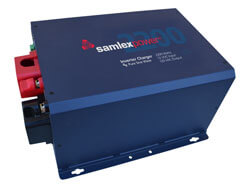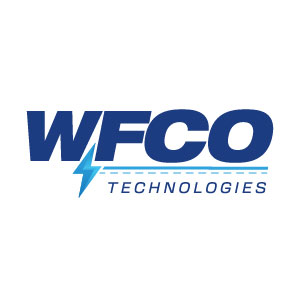I am upgrading my small trailer camper. Currently it has a WF 8740 Power Center, Lead Acid battery, and 80 Watt solar. The solar feed and power from the 7 pin trailer connector are connected directly to the battery. The power center has AC breakers, DC circuits/fuses, and a converter in it to charge the battery and power DC when plugged in to shore power. I’m not sure if the DC circuit to the battery is on it’s own circuit or tied directly to the DC breakers.
The camper is “Solar Ready” which is simply a 12 volt quick connect like the trickle charges for my motorcycles (this is wired directly to the battery). My 80 watt panel/controller plugs directly in to this. I don’t think the wires are big enough for 400 watts/30ish amps.
I am upgrading the solar to 400 watt and replacing the lead acid with a SOK 206AH lithium battery. I’ll need to upgrade my power center (for shore power charging), pick up 4 100 watt panels and controller, get a new battery, and buy the wiring/breakers/cut off switches to install it.
The WF8740 power center is not idea to charge a lithium battery (tops at 13.6 rather than 14.6). I’ll need the newer 8740LiS which is currently hard to get. I think I found one in stock and it is ordered. That should take care of my AC charging for the Lithium battery (it charges for 4 hours at 14.6 before dropping voltage which is, at least, better than the modes for lead acid).
WFCO has suggested I connect the solar controller and lead from the truck directly to the battery. Does that sound like the best approach? That means if I am plugged into shore power (or my 2000 watt generator) and the sun is out, both would be charging the battery (unless I flip the cutoff to solar). Is that a problem? If so, I can get a DCC50S and connect the Power Center to the alternator input so the DCC50S manages the charging when both solar and shore power are available.
With my trailer harness, I’m concerned that if I connect it direct to the battery (as is currently set up for lead acid) it will cause problems because the battery wants to suck up 50 amps. I’m thinking I’ll trip a breaker but not sure. My truck is a 2019 Dodge Ram 1500 and I am not sure yet how it is set up to handle feeding a power hungry battery.
So my questions are:
The camper is “Solar Ready” which is simply a 12 volt quick connect like the trickle charges for my motorcycles (this is wired directly to the battery). My 80 watt panel/controller plugs directly in to this. I don’t think the wires are big enough for 400 watts/30ish amps.
I am upgrading the solar to 400 watt and replacing the lead acid with a SOK 206AH lithium battery. I’ll need to upgrade my power center (for shore power charging), pick up 4 100 watt panels and controller, get a new battery, and buy the wiring/breakers/cut off switches to install it.
The WF8740 power center is not idea to charge a lithium battery (tops at 13.6 rather than 14.6). I’ll need the newer 8740LiS which is currently hard to get. I think I found one in stock and it is ordered. That should take care of my AC charging for the Lithium battery (it charges for 4 hours at 14.6 before dropping voltage which is, at least, better than the modes for lead acid).
WFCO has suggested I connect the solar controller and lead from the truck directly to the battery. Does that sound like the best approach? That means if I am plugged into shore power (or my 2000 watt generator) and the sun is out, both would be charging the battery (unless I flip the cutoff to solar). Is that a problem? If so, I can get a DCC50S and connect the Power Center to the alternator input so the DCC50S manages the charging when both solar and shore power are available.
With my trailer harness, I’m concerned that if I connect it direct to the battery (as is currently set up for lead acid) it will cause problems because the battery wants to suck up 50 amps. I’m thinking I’ll trip a breaker but not sure. My truck is a 2019 Dodge Ram 1500 and I am not sure yet how it is set up to handle feeding a power hungry battery.
So my questions are:
- Is the 8740Lis necessary. I’m thinking yes since I store in garage out of sun and need shore power to keep the battery charged.
- Where do I connect the Solar (direct to battery from controller or use a DCC50S to manage the power center and solar)?
- How do I connect the power from the 7 pin trailer harness (direct to battery, through DCC50S, or …?). My understanding is this really doesn’t offer much power anyways so not a big issue.






